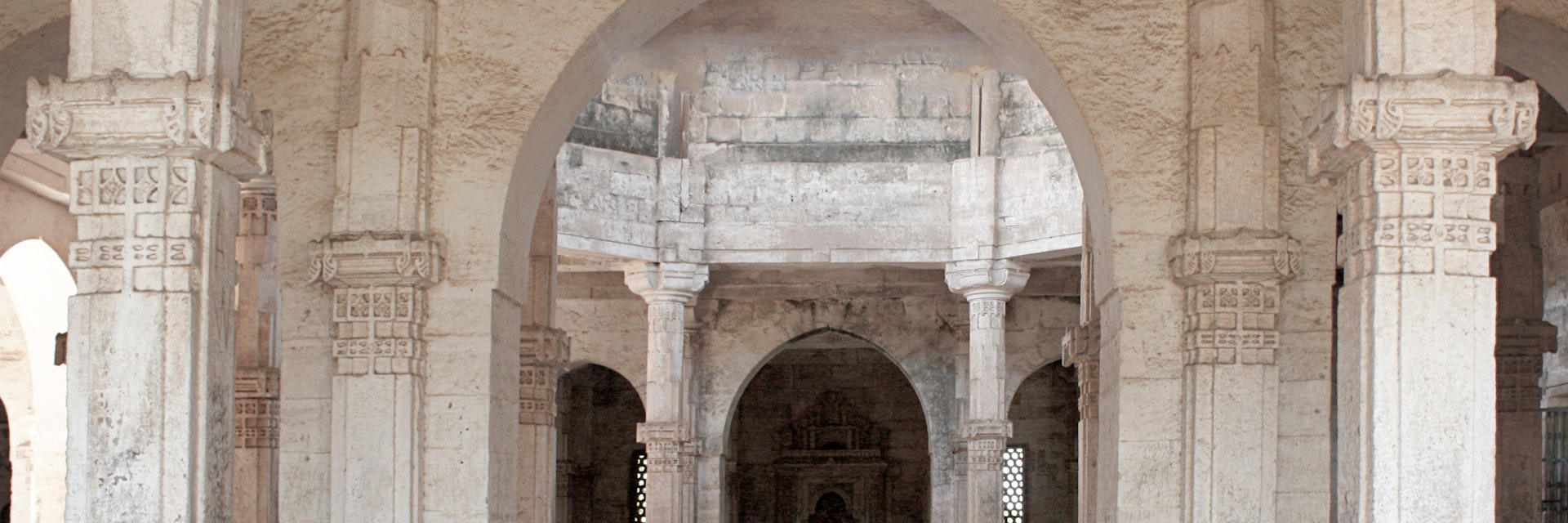This ancient fort is believed to have been built in 319 BC by the Mauryan emperor Chandragupta, though it has been extended many times. In places the ramparts reach 20m high. It’s been besieged 16 times, and legend has it that it once withstood a 12-year onslaught. The views over the city and east to Girnar Hill are superb, and within the fort's walls are a magnificent former mosque, a set of millennia-old Buddhist caves and two fine step-wells.
Jama Masjid, the disused mosque, was converted from a palace in the 15th century by Gujarat sultan Mahmud Begada. It has a rare roofed courtyard with three octagonal openings that may once have been covered by domes. It's a shame about the graffiti, but the delicate mihrab (niche) stonework and the forest of columns are still stunning. From the roof, the city views are excellent.
Close to the mosque, the Buddhist caves are not actually caves but monastic quarters carved out of rock in the 2nd century AD. Descend into the eerie, three-storey complex to see the main hall and its pillars, with weathered carvings.
The fort has two fine step-wells, both cut from solid rock. The circular, 41m-deep Adi Kadi Vav was cut in the 15th century and named after two slave girls who used to fetch water from it. Navghan Kuvo, 52m deep and designed to help withstand sieges, is almost 1000 years old. Its magnificent staircase spirals around the well shaft. Look for the centuries-old dovecotes.




